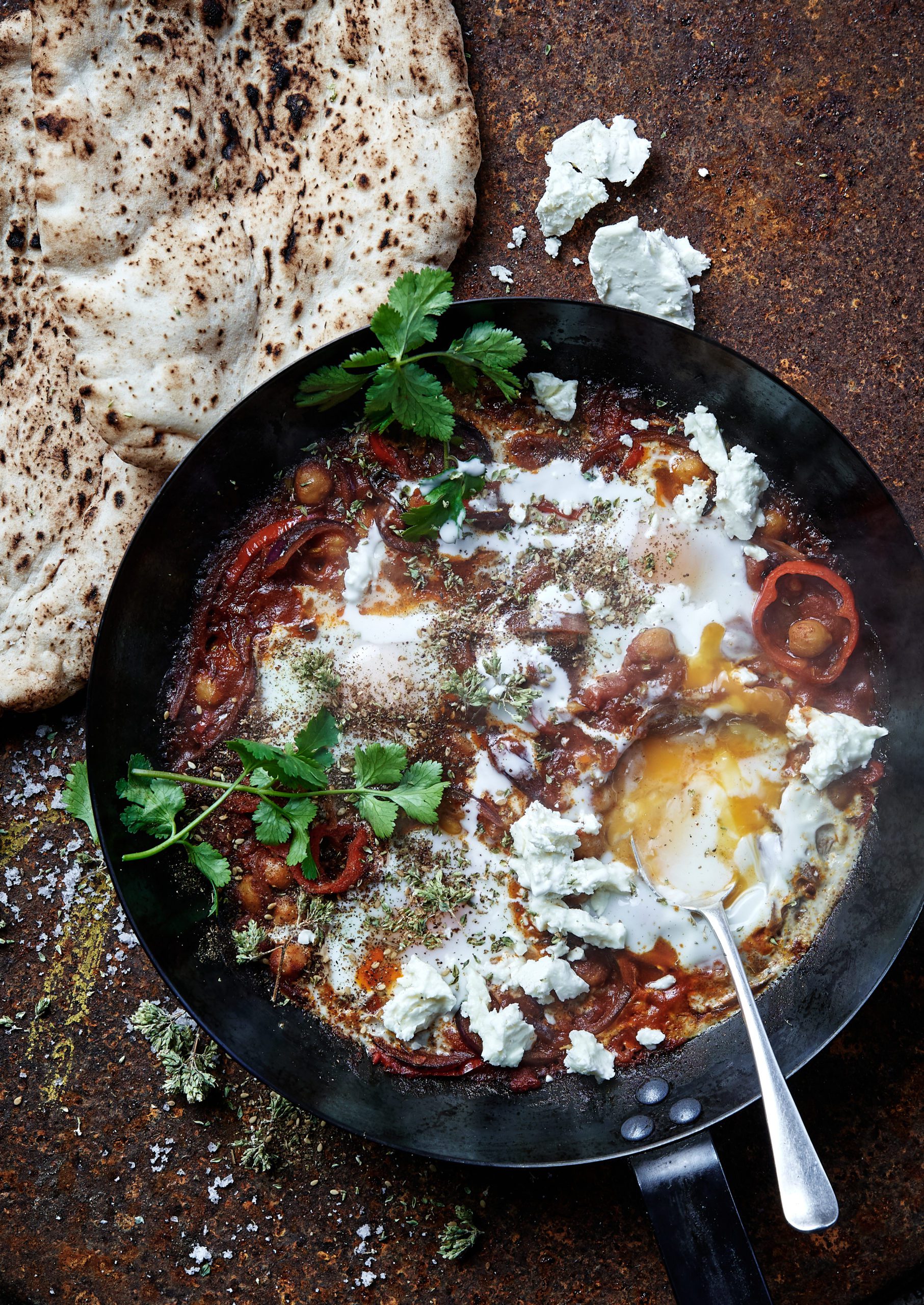One egg is un oeuf, for the "French-speaking" laymen among us. Egg plays an unadulteratedly delicious role in this dish. Shakshuka is originally a traditional Hebrew/Arab breakfast, but it can also be prepared for lunch and even dinner. We are talking about a real all-rounder. In this dish you will find the special influences of Oeuf Amsterdam, without damaging the 'heritage' of the shakshuka.
The word "shakshuka" itself evokes a sense of exoticism and is derived from the Arabic word "shakshek," meaning "shaking" or "stirring." This perfectly reflects the dish's preparation method, in which ingredients are combined and gently stirred in a single pan until a harmonious whole is created.
One of the most appealing aspects of Smokey shakshuka is its versatility. This dish can be enjoyed at any time of day, from a hearty breakfast to a tasty brunch, a light lunch or an atmospheric dinner. It is a true chameleon in the world of culinary creativity, often adapting ingredients according to personal taste preferences and availability.
In its region of origin, such as countries in North Africa and the Middle East, shakshuka is a popular dish that is often prepared and served in family kitchens and local eateries. It is a dish that promotes social connection, as it is ideal for sharing with friends and family. The combination of eggs poached in a spicy tomato sauce, flavored with an assortment of herbs and spices, has an undeniable appeal that stimulates the senses and brings people together.
What makes shakshuka even more interesting is the modern twist given to it by enthusiastic cooks around the world. One notable trend is preparing shakshuka on the barbecue, particularly on Bastard BBQ or similar kamado grills. This grilling method adds an extra dimension to the dish, mixing the smoky aromas of the charcoal with the spicy flavors of the sauce and the softness of the poached eggs. Use The Bastard Phantom Frypan for this purpose.
Whether you enjoy shakshuka in its traditional form or adventure with new methods of preparation, this dish remains a feast for the senses and a reminder of the beauty of the culinary diversity our world has to offer. It is a celebration of flavors, colors and cultures that enriches our eating habits and connects us to the rich history of human gastronomy.
Also keep an eye on our Instagram page for even more delicious dishes: thebastard.official





















